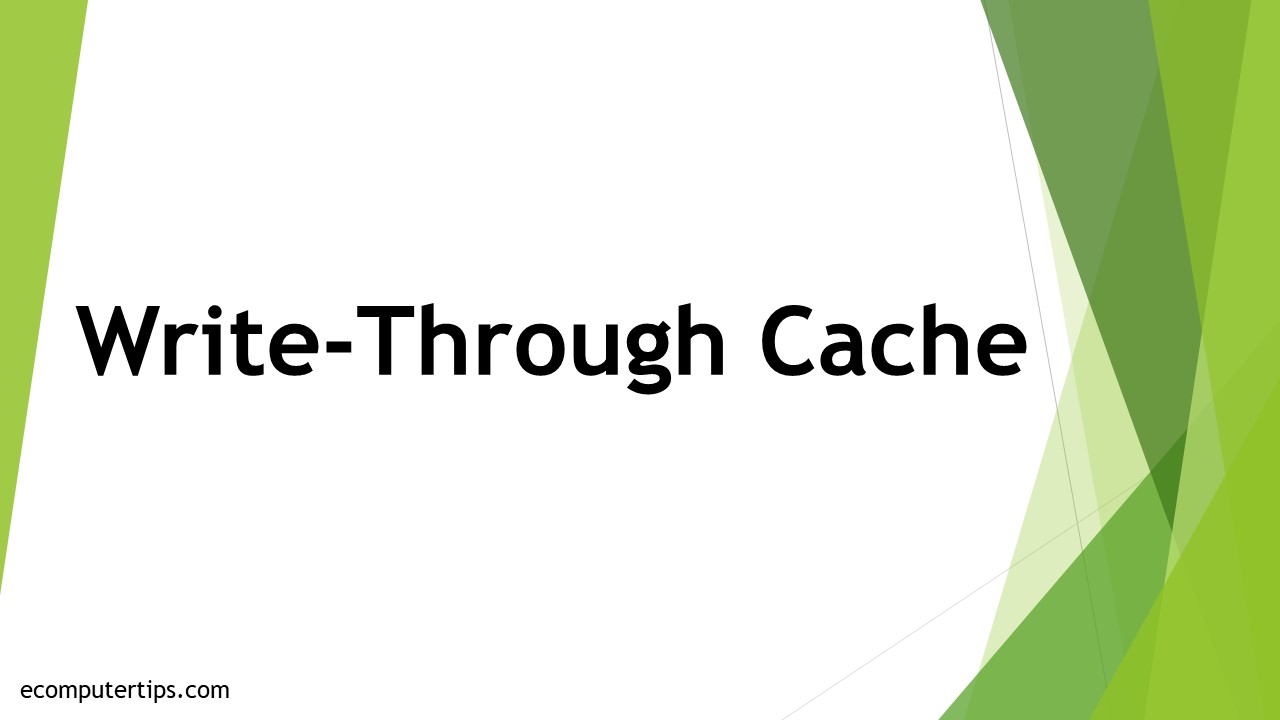In This Article
What is Write-Through Cache?
The specific section of the memory that allows faster access to the future data is called a write-through cache.
In technical terms, it is a process of writing or copying data to higher level caches at the same time. It is a very common and useful process followed by processors that writes to cache and backing stores simultaneously.
KEY TAKEAWAYS
- Write-through caching refers to the strategy of updating the database and the cache at the same time.
- This particular technique helps in ensuring data consistency between the database and the cache.
- It is a simple process that is easy to use and implement.
- Write-through is a very useful process to follow to update operations occasionally.
- The process protects data from losses due to system failures, such as crashes and power outages.
Understanding Write-Through Cache

Write-through caching process signifies a specific storage method where data is stored in both the cache and the memory at the same time to ensure there is no data loss due to sudden system failure.
In this process, the data is written to both the cache as well as in the primary memory, where both serve different purposes as follows:
- The data written to the cache helps in expediting the requests.
- The data written to the primary memory performs as a data backup to prevent data loss during unavoidable situations.
The primary purpose of the write-through cache process, apart from helping in expediting the read performance in memory access approaches and also helping in faster data retrieval, is to eliminate the confusion in a multiprocessor system.
In such systems, since two or more devices compete to share the main memory, having different data in it and the cache would cause significant problems.
However, data insurance in this process is offered at the cost of speed. This is because every operation needs to be written twice, which causes a time-consuming data redundancy.
This means that the active application cannot start the next operation until a particular data block is written onto the main memory and the cache.
Still, it is the data insurance factor that makes the write-through process a more useful one in a few specific and critical applications where loss of data cannot be tolerated, such as:
- Medical device control
- Banking
In these sectors, the volume of data handled is huge at any given point of time. Therefore, a fast process, such as write-through, to back up data is required.
Typically, the significance of the process is not whether it happens in parallel or in the order of occurrence.
Instead, the important factor is that the confirmation of I/O completion happens only when the data is written to both the places, the cache and the Random Access Memory (RAM).
Advantages
- It allows simultaneous updating of data in the cache and in the memory.
- It is a simple process to implement.
- It is a safe and reliable process.
- The number of write operations is lower in this process.
- During a system failure or power outage, it helps with data recovery.
- It ensures data is in the backing store and not lost during cache disruption.
- It allows fast retrieval of data.
- There is no read miss in writes to the primary memory in this process.
- It ensures data consistency since there is a current copy held always in the main memory.
- There is no stale data in this process.
- The process is appropriate for read-heavy systems.
Disadvantages
- Writing data to two places simultaneously may result in latency.
- The process is relatively slow.
- There is a risk of data unavailability in an event of cache failure.
- Data may be lost if the cache fails before saving it in the backing store.
- There is a chance that the cache will be filled with needless items resulting in a loss of space and the eviction of useful items.
- The process uses excess bandwidth.
- It needs access to the memory for every write operation.
What is the Main Alternative to Write-Through Cache?
The main alternative to write-through cache is write-back cache. In this process, the processor writes the changes only to the cache and not to the main memory.
Conclusion
The write-through process offers a much more manageable and simpler way to backup a database.
It encapsulates persistence code judgment within a sole provider and helps in read and write operations along with maintaining the database layer at the caching and provider levels to improve system performance.